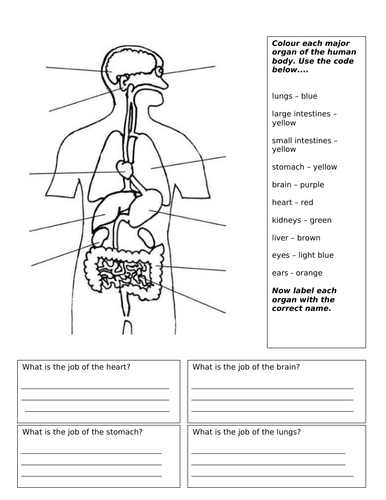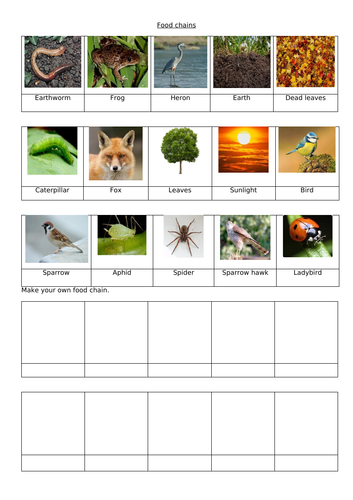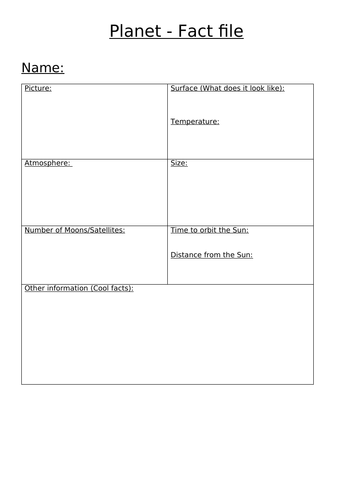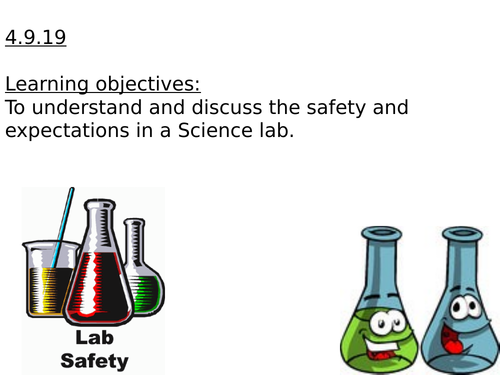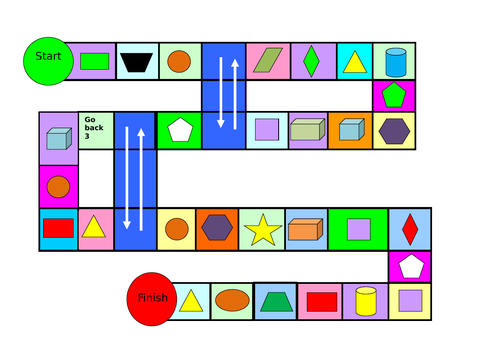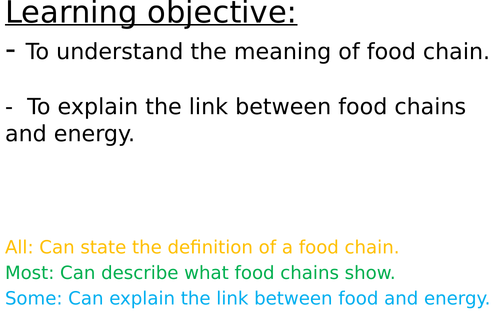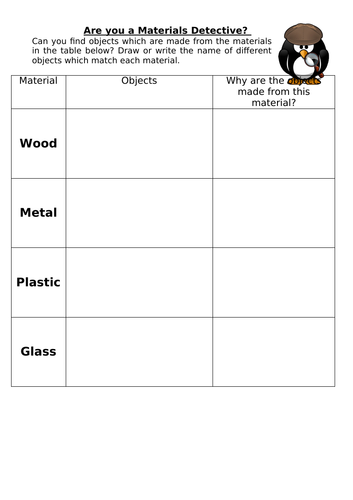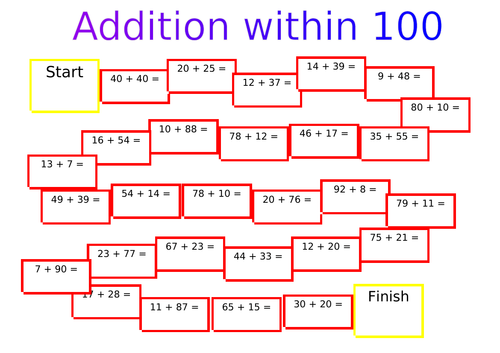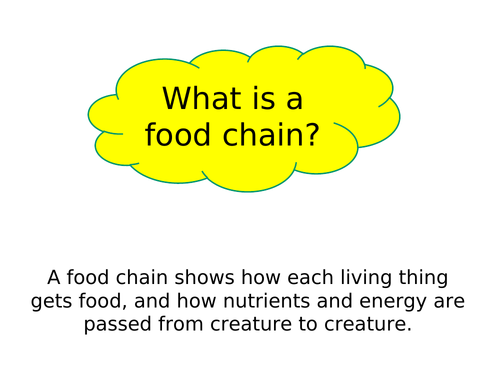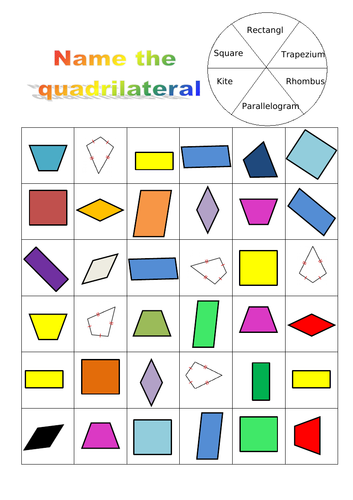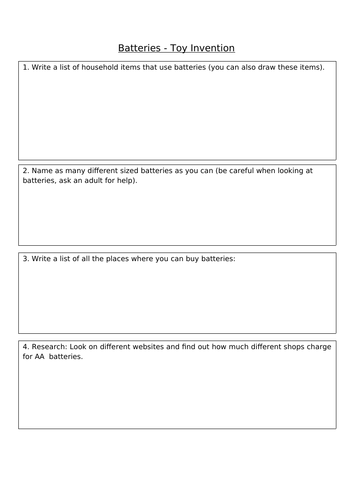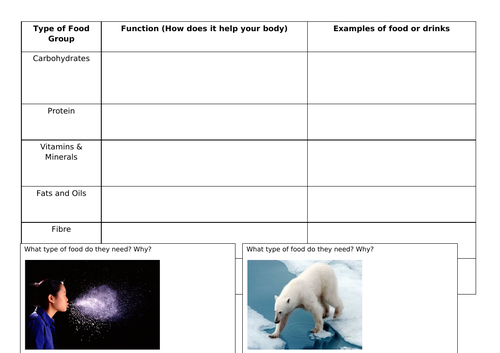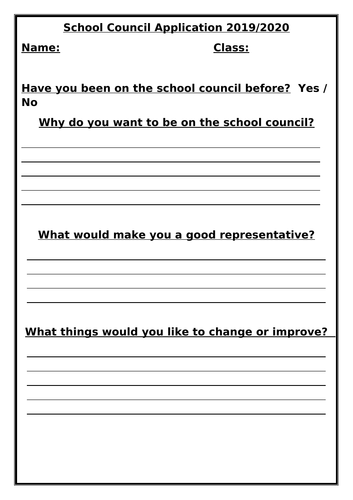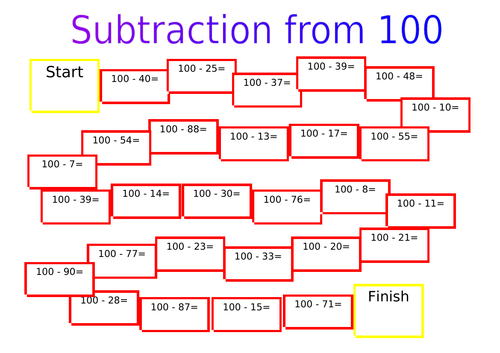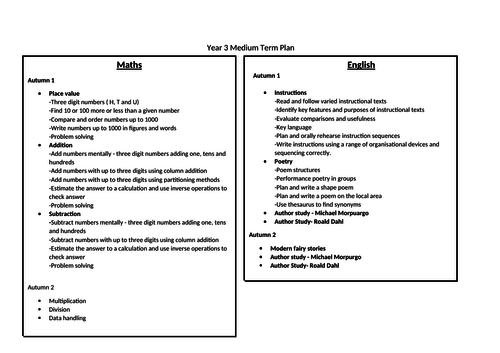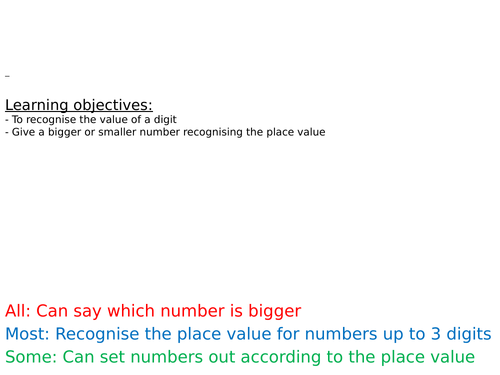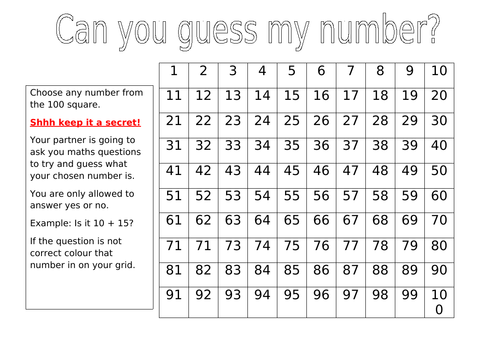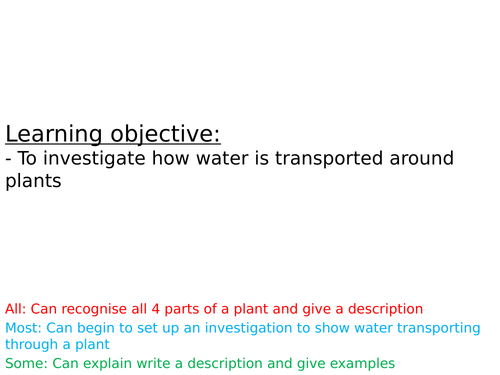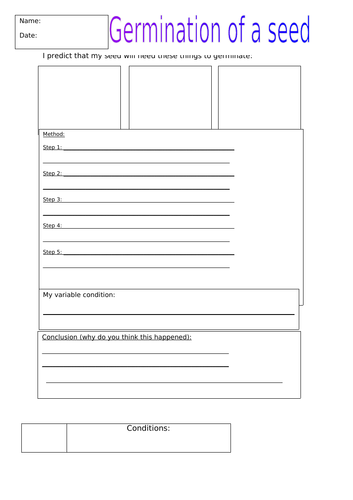
41Uploads
12k+Views
488Downloads
All resources

Human body organs
This resource is great for students of all ages to recognise organs within the human body.
Pupils are given an empty diagram of the human body and are required to label the key organs; once the organs have been labelled and students can then colour each part of the human body using the matching key.
In order to extend learning students can either use their own knowledge or research why certain organs are important and the functions within the body.

Food Chains
A very good visual representation for students involving food chains.
Student will need to cut and stick the top 3 food chains individually and place these into the correct order; showing which animal or plant gives energy to the next animal or plant.
Challenge:
Students can create their own food chains using their own consumers and producers. (consumer eats other plants or animals) (producer grows for animals to eat e.g. grass)
Extension:
Food chains have consumers and producers, can the student name the consumers and consumers within the different food chain.

Planet Fact File Template
A template in order to create a fact file all about the planets in our solar system.
Students can complete their own research using the secondary resources e.g. internet, books and magazines etc. They may also wish to add facts they already may know for each planet.
There is one fact file template; however, I would suggest using the same template to do all 8 planets.
Mars, Venus, Earth, Saturn, Neptune, Mercury, Jupiter and Uranus.
Remember: Pluto is no longer classed as a planet and is now considered by Scientists to be a dwarf planet.
This could be completed as an extension activity - why is Pluto a dwarf planet?

Science lab, safety rules lesson
An interactive Power Point with different Science rules and expectations. You may wish to complete with your students as a quiz, raising hands if you agree or disagree.
Worksheet chart also attached for students to tick if they think the sentence is safe Science or unsafe Science.
E.g. Is running around the classroom safe or unsafe?

Name the shape game
A great game to begin to learn the name of basic 2D and 3D shapes.
Students will need to follow the the game board; they will roll a di and which ever number it lands on this is how many squares they will move. Once they have rolled and moved their counter they will need to name the shape. If you get the name correct you can stay on this square, if you incorrectly name the shape you must go back to the square you can from.
Interact game to be played in a small group at school or a family game to play at home - a fun maths game!

Energy costs - KS3 Activate Science
A unit worth of powerpoints including main points of discussions, starters and some suggested activities.
Energy costs - KS3 activate
Planning used with SEN KS3 students, also suitable for mainstream students.

Ecosytems - KS3 SEND Science
A unit worth of powerpoints including main points of discussions, starters and some suggested activities.
Ecosystems - KS3 activate
Planning used with SEN KS3 students, also suitable for mainstream students.

Different materials detective hunt
Are you a materials detective?
Students can either go around the classroom, school or their home and look for objects made from different materials.
The materials they are looking for are: wood, plastic, metal and glass. Once students have found an object made from this material they can either write down what they have found or draw a picture - they may wish to do both.
Extension - Why do you think these objects are made from these materials?
E.g. why would a pan be made of metal and not wood?
Once sheet has been completed you may wish to use 4 different colour sticky notes or paper. Students can colour coordinate different objects e.g. all items they can find made from wood, would be colour coordinated with orange.

Addition within 100 game
Learning objectives:
Using and applying addition knowledge for TU + TU
This board game is a perfect game for a range of students due to the levels of differentiation which can be used:
Students use a number line
Students use a calculator
Students to use a 100 square
Students to use column addition methods
Great game for primary school or SEN students. Students to be working in partners or in a small group. Can also be used for interventions.
Each player takes it in turns to roll the dice and move along the board. When they land on a number the question must be answered; students can answer the questions in a variety of ways according to their personal attainment (see differentiation above)

Food chains - producers, consumers and decomposers
A lesson PowerPoint discussing the meaning of food chains, a definition of key words of the topic - consumers, producers, decomposers, herbivores, carnivores and omnivores. Students at the end of the lesson will be able to create their own food chains and show the different key word for each organism.

Name and recognise the quadrilateral game
Students to work in small groups or with partners to play the game. The game focuses on a range of different quadrilateral shapes (shapes with 4 sides); Students to either roll the di or use a spinner on the spinning wheel at the top, if using a di the spinning wheel at the top will need labelled with the numbers 1-6.
Students will either roll their di or spin a spinner and which ever shape name it lands on they will then cover this with a counter.
For example:
If the spinner lands on rectangle the student will need to look for the shape which is a rectangle and cover this over.
If there if no more rectangles available then the students would not cover a shape. Once all shapes are covered the student which covered the most shapes wins the game.

Inventions - batteries
Students will complete a range of investigation, design and research activities for this piece of work.
Firstly, they will find a range of household items that require batteries in order to work.
Secondly, they will look at a range of batteries they have found and write down the different sizes of these e.g. AA
Thirdly, students can research different shops that sell batteries and look at the range of different prices.
Students will then be creative and design their own toy, the toy must work only from using batteries. The can decide the size battery it will require, where the battery will be, how the battery will be safe etc.

Food groups - how it helps our bodies
Students to be given a chart with all food groups mentioned. They can either research or use their own knowledge and think about each different type of food group and how this food group benefits your body.
Then will then complete the next part of the chart all about what food or drink would fit into each category.
Activity 2.
Students will be given 4 pictures in relation to animals and human. They must look at the picture and decide which type of food group may help and why.
A person with a cold/ flu
An underweight polar bear
A malnourished child
An obese human

School council application form
A school council application form, form can be given to the whole school. Students who wish to be on the School Council can fill in an application form explaining why they think they should be chosen to represent their class and school as a member of the School Council.

Subtraction from 100
Learning objectives:
Using and applying subtraction knowledge from 100
This board game is a perfect game for a range of students due to the levels of differentiation which can be used:
Students use a number line
Students use a calculator
Students to use a 100 square
Students to use column subtraction methods
Great game for primary school or SEN students. Students to be working in partners or in a small group. Can also be used for interventions.
Each player takes it in turns to roll the dice and move along the board. When they land on a square the question must be answered; students can answer the questions in a variety of ways according to their personal attainment (see differentiation above)

Year 3 - Medium term plan
Year 3 medium term plan for 1 term.
Plan includes all learning objectives for one term, linking into the next term of work.

Addition Dienes rod lesson
Power point lesson plan including all the learning objectives and outcomes for different ability groups.
To recognise the value of a digit using Dienes rods
Explain how a number is bigger or smaller by recognising the place value
Can be used as a whole group or intervention group.
Resources needing Dienes Rods.
Slide - What is in the bag?
Is a independent activity where students choose a bag, in each bag there will be a different number of tens and units.
Students to count the amount and record these into their maths book or sheet.

Can you guess my number?
Can use this game for all ranges of Maths. Additon, subtraction, multiplication and division.
Great for mental calculations as well as written methods.
Mastery by using and applying knowledge at the end of a topic.
Students work in partners and both choose a number on the hundred square. They then take it in turns to ask each other mathematical questions in order to try guess the number their partner is thinking of.

Water transportation in plants - Investigation
A powerpoint showing the process a plants goes through to complete water transportation, as well as a food colour experiment.
Investigation:
Food colouring water transportation experiment. When food colouring is added to the water in the test tube, the stem will begin to soak up the water and the petals of the flower will change colour. White petals needed and dark food colouring works best.
Step by step method, video of experiment as well as appropriate investigation for KS2 pupils.

Germination of a seed - Experiment planning sheet
A planning sheet for a step by step layout for germination of a seed experiment.
Students in the class all to be given different conditions, no water, no light, no air, no warmth and all conditions; after a few weeks students to see which type of condition was the best to germinate the seeds.

